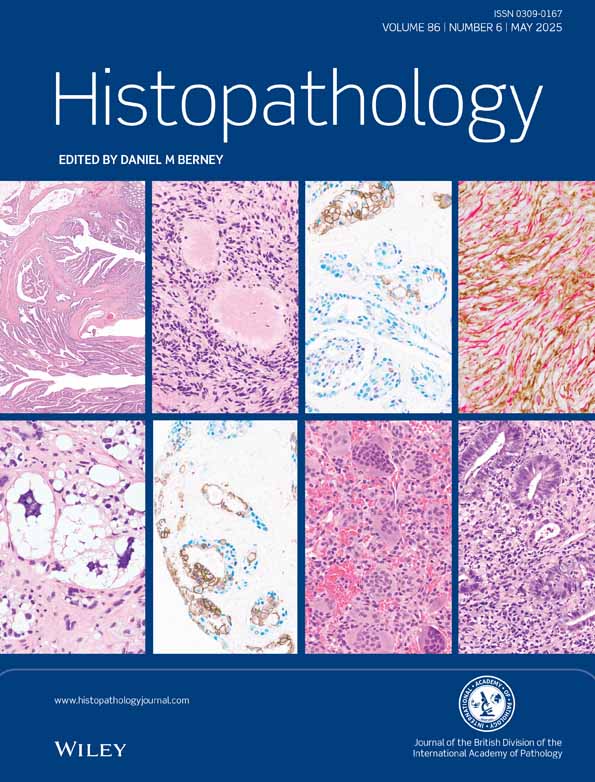Risk prediction criteria for the primary hepatic perivascular epithelioid cell tumour family, including angiomyolipoma: analysis of 132 cases with a literature review
Abstract
Aims
The hepatic perivascular epithelioid cell tumour (PEComa), including angiomyolipoma, exhibits diverse morphology and clinical behaviour; however, its prognostic features remain undefined. This study aimed to investigate its histological features and prognostic factors.
Methods and Results
In total, 132 patients were included. Clinical data and histopathological slides were assessed along with the p53 and Ki-67 immunohistochemistry. Targeted next-generation sequencing was performed in three cases. Based on the histologic subtypes, 7 (10%), 36 (51%), 13 (18%), and 15 (21%) patients were classified as inflammatory angiomyolipoma, conventional angiomyolipoma, epithelioid angiomyolipoma, and PEComa not otherwise specified (NOS), respectively, among 71 patients who underwent surgical resection. We proposed the risk prediction criteria after defining primary tumour size ≥7 cm, infiltrative border, mitotic rate >1/10 mm2, necrosis, vascular invasion, and PEComa NOS as worrisome features, as follows: high-risk: ≥3 worrisome features; intermediate-risk: 1–2 features; low-risk: none of the features. Applying these criteria, 4 (6%), 31 (44%), and 36 (51%) patients were classified into high-, intermediate-, and low-risk groups, respectively. One patient each in the high-risk (25%) and intermediate-risk (3%) groups developed peritoneal metastases and intrahepatic recurrence, respectively, whereas none in the low-risk group showed disease progression. A literature review of clinically malignant hepatic PEComa family tumours was conducted, and upon application of our criteria, 62% (16/26) of the patients were classified as high-risk and 35% (9/26) as intermediate- or high-risk.
Conclusion
Our risk prediction criteria can effectively predict the clinical outcomes in primary hepatic PEComa.
Graphical Abstract
Conflict of interest statement
The authors declare that they have no relevant conflict of interest.
Open Research
Data availability statement
The data that support the findings of this study are available on request from the corresponding author. The data are not publicly available due to privacy or ethical restrictions.





